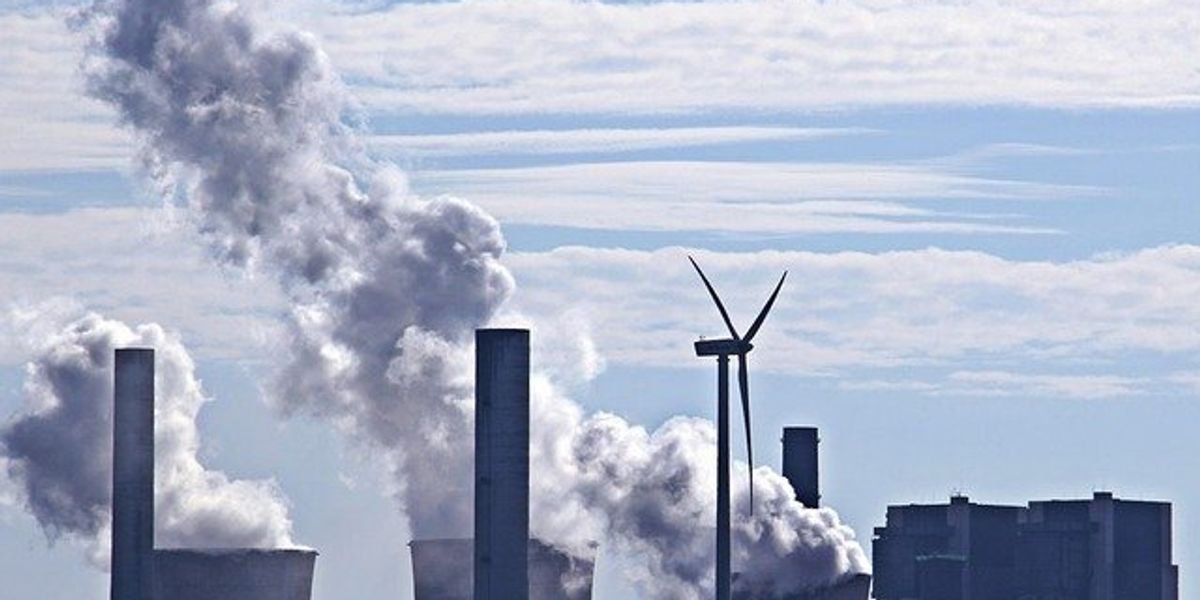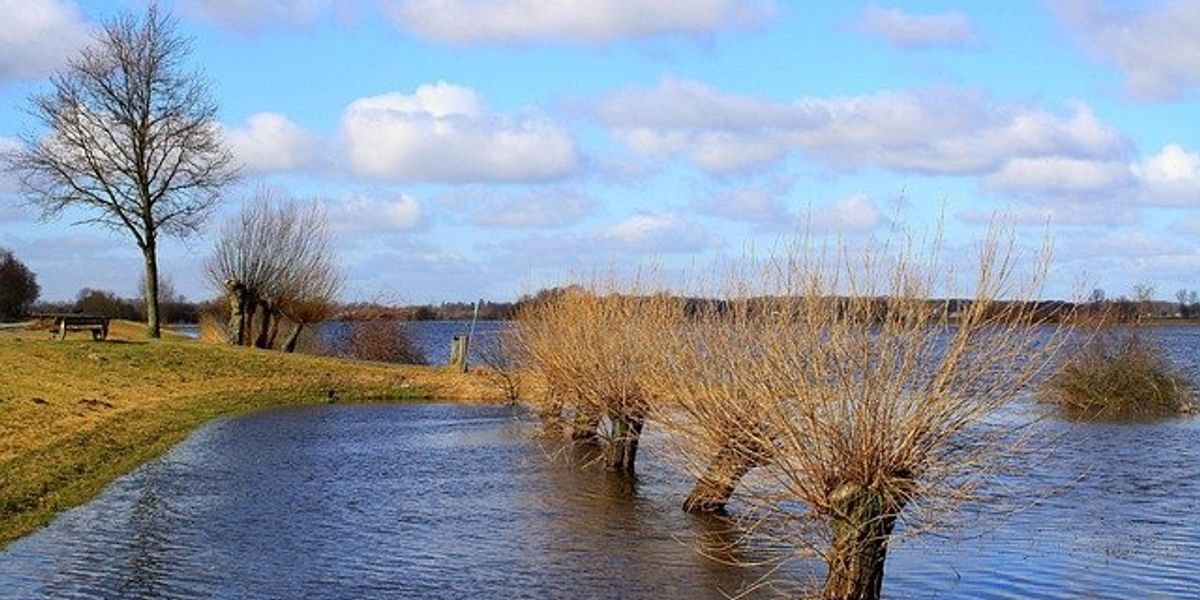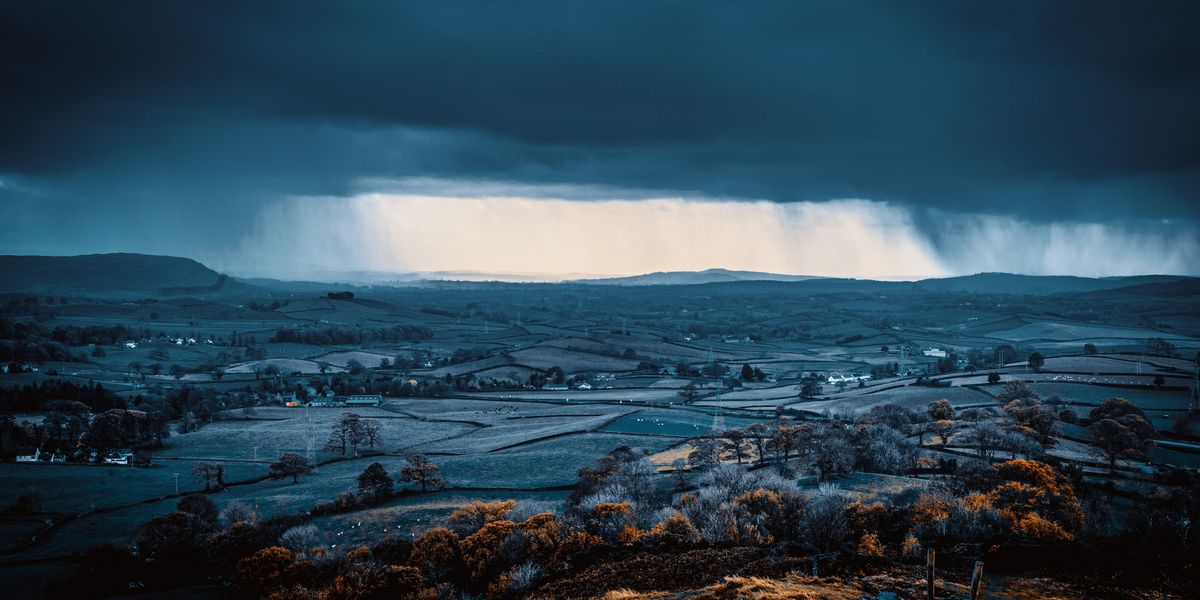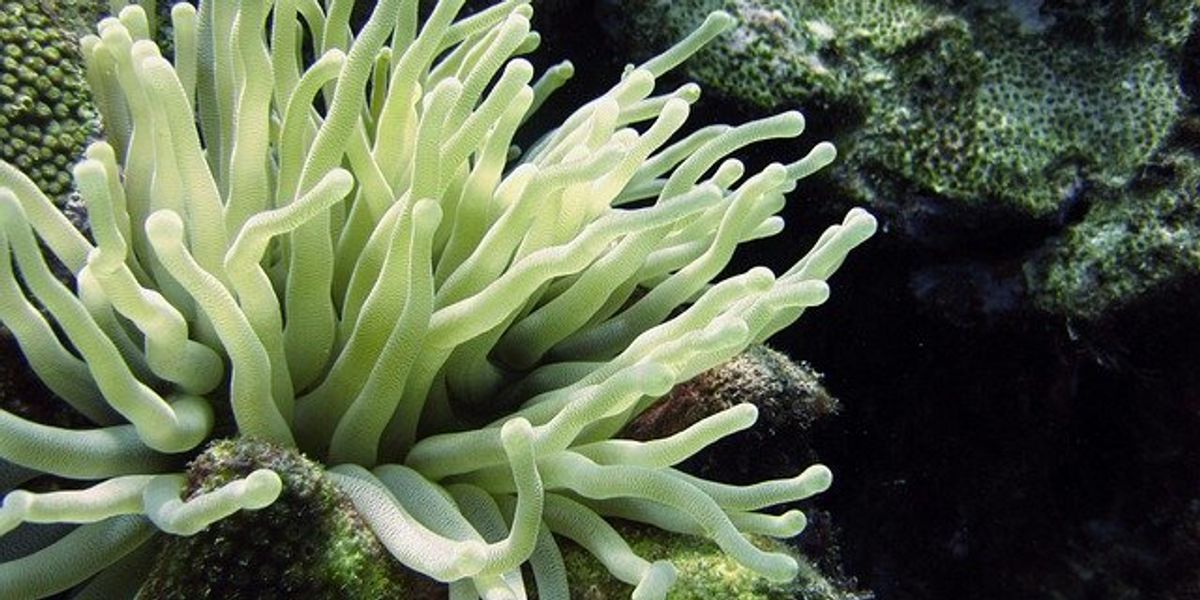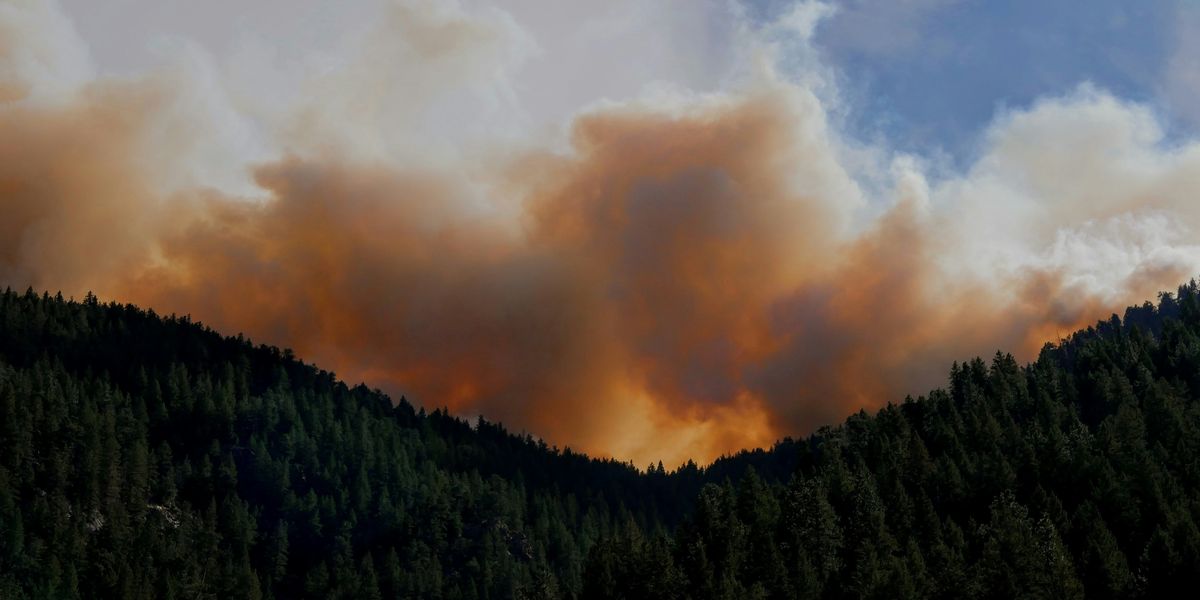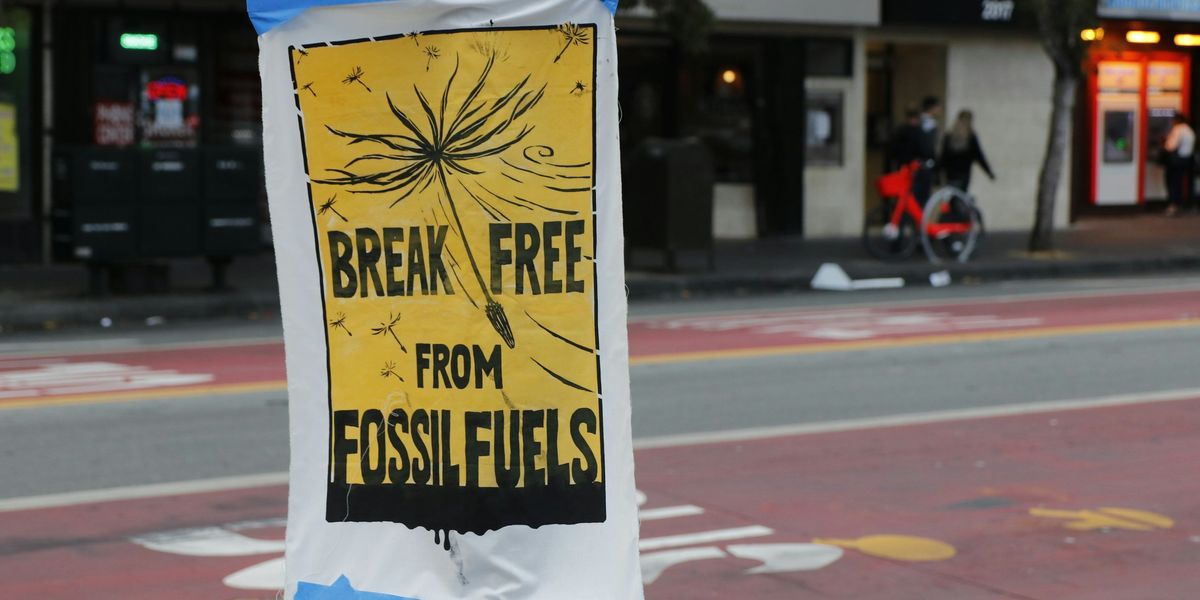persistent organic pollutants
Waste pickers are fighting for recognition in the global plastics treaty
Pollution at Australia’s largest Antarctic research station exceeded guidelines for almost 20 years
Levels of contaminants such as arsenic and lead at Casey eclipsed international quality guidelines between 1997 and 2015, study finds.
Plastic recycling could be more dangerous than you think
Coastal and seafaring polar bears have different chemical exposures
Scientist awarded $100K for work on Arctic contaminants that led to ban
Agent Orange, exposed: How U.S. chemical warfare in Vietnam unleashed a slow-moving disaster.
Some 45 million liters of the poisoned spray was Agent Orange, which contains the toxic compound dioxin. It has unleashed in Vietnam a slow-onset disaster whose devastating economic, health and ecological impacts that are still being felt today.
In the end, the military campaign was called Operation Ranch Hand, but it originally went by a more appropriately hellish appellation: Operation Hades. As part of this Vietnam War effort, from 1961 to 1971, the United States sprayed over 73 million liters of chemical agents on the country to strip away the vegetation that provided cover for Vietcong troops in “enemy territory.”
Using a variety of defoliants, the U.S. military also intentionally targeted cultivated land, destroying crops and disrupting rice production and distribution by the largely communist National Liberation Front, a party devoted to reunification of North and South Vietnam.
Some 45 million liters of the poisoned spray was Agent Orange, which contains the toxic compound dioxin. It has unleashed in Vietnam a slow-onset disaster whose devastating economic, health and ecological impacts that are still being felt today.
This is one of the greatest legacies of the country’s 20-year war, but is yet to be honestly confronted. Even Ken Burns and Lynn Novick seem to gloss over this contentious issue, both in their supposedly exhaustive “Vietnam War” documentary series and in subsequent interviews about the horrors of Vietnam.
Vietnam’s half-century of disaster
More than 10 years of U.S. chemical warfare in Vietnam exposed an estimated 2.1 to 4.8 million Vietnamese people to Agent Orange. More than 40 years on, the impact on their health has been staggering.
This dispersion of Agent Orange over a vast area of central and south Vietnam poisoned the soil, river systems, lakes and rice paddies of Vietnam, enabling toxic chemicals to enter the food chain.
Today crops are grown and livestock graze at former U.S. bases where toxic dioxin continues to pollute the soil. HOANG DINH NAM / AFP
Vietnamese people weren’t the only ones poisoned by Agent Orange. U.S. soldiers, unaware of the dangers, sometimes showered in the empty 55-gallon drums, used them to store food and repurposed them as barbecue pits.
Unlike the effects of another chemical weapon used in Vietnam – namely napalm, which caused painful death by burns or asphyxiation – Agent Orange exposure did not affect its victims immediately.
In the first generation, the impacts were mostly visible in high rates of various forms of cancer among both U.S. soldiers and Vietnam residents.
But then the children were born. It is estimated that, in total, tens of thousands of people have suffered serious birth defects – spina bifida, cerebral palsy, physical and intellectual disabilities and missing or deformed limbs. Because the effects of the chemical are passed from one generation to the next, Agent Orange is now debilitating its third and fourth generation.
Aerial spraying in central and southern Vietnam. Wikimedia
A legacy of environmental devastation
During the 10-year campaign, U.S. aircraft targeted 4.5 million acres across 30 different provinces in the area below the 17th parallel and in the Mekong Delta, destroying inland hardwood forests and coastal mangrove swamps as they sprayed.
The most heavily exposed locations – among them Dong Nai, Binh Phuoc, Thua Thien Hue and Kontum – were sprayed multiple times. Toxic hotspots also remain at several former U.S. air force bases.
And while research in those areas is limited – an extensive 2003 study was canceled in 2005 due to a reported “lack of mutual understanding” between the U.S. and the Vietnamese governments – evidence suggests that the heavily polluted soil and water in these locations have yet to recover.
The dangerous quantity of residual dioxin in the earth thwarts the normal growth of crops and trees, while continuing to poison the food chain.
Vietnam’s natural defenses were also debilitated. Nearly 50 percent of the country’s mangroves, which protect shorelines from typhoons and tsunamis, were destroyed.
On a positive note, the Vietnamese government and both local and international organizations are making strides toward restoring this critical landscape. The U.S. and Vietnam are also undertaking a joint remediation program to deal with dioxin-contaminated soil and water.
Mangrove forests before and after spraying. Wikimedia
The destruction of Vietnamese forests, however, has proven irreversible. The natural habitat of such rare species as tigers, elephants, bears and leopards were distorted, in many cases beyond repair.
In parts of central and southern Vietnam that were already exposed to environmental hazards such as frequent typhoons and flooding in low-lying areas and droughts and water scarcity in the highlands and Mekong Delta, herbicide spraying led to nutrient loss in the soil.
This, in turn, has caused erosion, compromising forests in 28 river basins. As a result, flooding has gotten worse in numerous watershed areas.
Some of these vulnerable areas also happen to be very poor and, these days, home to a large number of Agent Orange victims.
War propaganda and delayed justice
During Operation Ranch Hand, the U.S. and South Vietnamese governments spent considerable time and effort making the claim that tactical herbicides were safe for humans and the environment.
U.S. propaganda about Agent Orange was so effective, it fooled American troops into thinking it was safe, too.
It launched a public relations campaign included educational programs showing civilians happily applying herbicides to their skin and passing through defoliated areas without concern.
One prominent comic strip featured a character named Brother Nam who explained that “The only effect of defoliant is to kill trees and force leaves to whither, and normally does not cause harm to people, livestock, land, or the drinking water of our compatriots.”
Brother Nam assured readers that herbicides were safe. Wikimedia
It’s abundantly clear now that this is false. Allegedly, chemical manufacturers had informed the U.S. military that Agent Orange was toxic, but spraying went forward anyway.
Today, Agent Orange has become a contentious legal and political issue, both within Vietnam and internationally. From 2005 to 2015, more than 200,000 Vietnamese victims suffering from 17 diseases linked to cancers, diabetes and birth defects were eligible for limited compensation, via a government program.
U.S. companies, including Monsanto and Dow Chemical, have taken the position that the governments involved in the war are solely responsible for paying out damages to Agent Orange victims. In 2004, a Vietnamese group unsuccessfully attempted to sue some 30 companies, alleging that the use of chemical weapons constituted a war crime. The class action case was dismissed in 2005 by a district court in Brooklyn, New York.
Many American victims have had better luck, though, seeing successful multi-million-dollar class action settlements with manufacturers of the chemical, including Dow, in 1984 and 2012.
Meanwhile, the U.S. government recently allocated more than US$13 billion to fund expanded Agent Orange-related health services in America. No such plan is in store in Vietnam.
It is unlikely that the U.S. will admit liability for the horrors Agent Orange unleashed in Vietnam. To do so would set an unwelcome precedent: Despite official denials, the U.S. and its allies, including Israel, have been accused of using chemical weapons in conflicts in Gaza, Iraq and Syria.
As a result, nobody is officially accountable for the suffering of Vietnamese victims of Agent Orange. The Burns and Novick documentary could have finally raised this uncomfortable truth, but, alas, the directors missed their chance.
This story was co-authored by Hang Thai T.M., a research assistant at the Posts and Telecommunications Institute of Technology, in Hanoi.
Missing EPA report warned of flooding at Superfund dumps.
U.S. EPA officials determined in 2014 that "flooding and inundation from more intense" storms could spur Superfund sites to spew contaminants.
Missing EPA report warned of flooding at Superfund dumps
Corbin Hiar, E&E; News reporter
Greenwire: Monday, September 18, 2017
A yard just across the river from the San Jacinto Waste Pits stained white and red from receding Hurricane Harvey floodwaters. Texas Health & Environment Alliance Inc./Facebook
U.S. EPA officials determined in 2014 that "flooding and inundation from more intense" storms could spur Superfund sites to spew contaminants.
And after Hurricane Harvey's torrential rains in southeast Texas last month, their predictions seemed to have come true.
Local activists discovered mercury globules and mysterious stains left as floodwaters receded near the still-submerged San Jacinto River Waste Pits along the San Jacinto River in Channelview, Texas.
But the EPA report warning that climate change-fueled storms pose similar risks to communities near the nation's most polluted tracts is no longer accessible via the agency's Superfund climate adaptation webpage. A link to the three-year-old report, which also included steps to prepare sites for a warmer world, now leads to a page that says it is being updated "to reflect EPA's priorities under the leadership of President Trump."
While Superfund experts doubt the climate plan would have done much to directly prevent damage done by Hurricanes Harvey and Irma to the waste pits and other toxic tracts, they say the document's disappearance will leave communities with contaminated sites less informed about the risks posed by increasingly severe natural disasters anticipated by climate models.
"I think that's part of the biggest challenge we face: Information that really is public information now is unavailable as EPA reconsiders it," said former Administrator Gina McCarthy, who oversaw the preparation of the agency's Superfund climate plan. "We have to make sure that climate science and real facts are provided to people. It was funded through public dollars; it belongs to them."
EPA failed to respond to requests for comment on the situation at the San Jacinto River Waste Pits or the missing climate report. But last Friday, Administrator Scott Pruitt and other federal and state officials toured the Superfund site, which is mainly contaminated with paper-mill sludge that contains carcinogenic dioxins and furans as well as toxic heavy metals like mercury, cadmium, copper, nickel and zinc.
"EPA remains committed to providing the necessary resources and personnel to ensure those affected by the devastation of Hurricane Harvey receive proper Agency attention," Pruitt said in a statement.
In separate releases, the agency last week indicated that it was still investigating three other potentially leaking Superfund sites in Texas and Florida. EPA also noted that dozens of other sites emerged from the storms unscathed.
Jackie Young, the founder and executive director of the Texas Health and Environment Alliance, met with Pruitt after he toured the site, which her seven-member advocacy group is focused on cleaning up. Although EPA sent reporters a photo of Young and an official from the Galveston Bay Foundation laughing with the administrator, their 10-minute talk wasn't part of Pruitt's original itinerary. Young learned of his unannounced visit at 1 a.m. on Friday, she said.
She said she wanted to be there because that was "our chance to meet face-to-face with our new administrator and let him know our position, but also let him know that we are reasonable people."
EPA Administrator Scott Pruitt and acting Regional Administrator Samuel Coleman hold an impromptu meeting with Scott Jones of the Galveston Bay Foundation and Jackie Young of the Texas Health and Environment Coalition outside the gates of the San Jacinto Waste Pits. U.S. EPA
"We're not rock throwers. We're not just screaming just because we feel like screaming," she said. "There is a very serious situation that needs to be addressed as quickly as possible, and we wanted to get that across to him."
She added, "I don't particularly agree with taking down years of research and hard work" on Superfund sites and climate change from EPA's website, but "we had a wonderful conversation."
The smiles in the snapshot, she explained, were prompted by a promise from Pruitt, Oklahoma's former attorney general, that "we would have a record of decision by the time Oklahoma plays Texas" in college football on Oct. 14. That document will guide the long-term cleanup of the site contaminants, which are currently only kept in place by a rock-covered containment cap.
But Pruitt and other EPA officials wouldn't give her any firm timeline on when the agency would complete its assessment of the landfill's cap — which is intended to keep stormwater from filtering through wastes and contaminating groundwater. The cap has been repeatedly damaged since it was constructed in 2011.
Meanwhile, people who live along the San Jacinto River are still wondering what contaminants they may be exposed to, Young said.
"There are people's yards that have three colors," she said. "They have closest to the house some green grass, and then they have about a foot of a rust-colored layer over their grass, and then between that and the river, it's just white. What is that? Why do our communities have three different-colored yards, balls of mercury in their yards? The only thing that we know for sure is that there are multiple toxic waste sites in the near vicinity of those yards, and those sites were completely inundated by Harvey's rainfall."
Missing 'road map'
The Superfund climate adaptation plan that EPA is now reconsidering calls for the Office of Superfund Remediation and Technology Innovation to develop tools and fact sheets to help officials pre-emptively determine whether a site or cleanup effort could be imperiled by climate change.
In the years that followed the report's release, EPA organized climate adaptation trainings and workshops to help frontline staff better protect the more than 1,300 Superfund sites across the country, according to Michael Cox, a former EPA climate adviser.
The Superfund climate adaptation recommendations "were being used as a road map to figure out what we're going to do and help communicate to our state, tribal and industry partners," he said.
All that has changed since the Trump's election, Cox said. The president has repeatedly referred to global warming an "expensive hoax" and has surrounded himself with fossil fuel industry-aligned appointees like Pruitt (Energywire, Dec. 8, 2016).
"During the Trump administration, you can't even talk about climate change," said Cox, who on his last day at the agency sent a letter to Pruitt critical of the administrator's climate science skepticism (Greenwire, April 4).
Pruitt's push to stop EPA officials from asking how climate change will affect Superfund sites is likely to have hurt the $1-billion-per-year cleanup program, the recently retired climate expert argued.
Site cleanup leaders are often technically capable of "taking into account anything that could be related to a 500-year flood or a 2-foot sea level rise or a single precipitation event of 6 inches instead of a historical extreme of 4 inches," Cox said. "Engineers can do that stuff, but you have to ask the question."
Meanwhile, community leaders will find it more difficult to find resources to help protect their families from Superfund sites that may be prone to flooding, wildfire or other natural cycles that climate change will make more severe, according to Lois Gibbs, the executive director of the nonprofit Center for Health, Environment & Justice.
"Little cities, little towns across America that need to understand climate and adaptation for problems such as what just happened cannot get that information," she said. While the missing Superfund climate adaptation report is still available online, people can only find it if they know exactly what they're looking for.
Gibbs acknowledged that the report's modest, capacity-building recommendations "wouldn't have done anything for what just happened."
But now, as people are rebuilding in the aftermath of two devastating hurricanes, "they want to look at it," she said. "The time when people want that type of information is in crisis."
Even before Texan activists raised concerns about mercury and other contaminants leaking in Channelview, Gibbs and other Superfund experts were concerned about the fate of the program, which Pruitt has promised to revitalize (Greenwire, Sept. 5).
McCarthy, Pruitt's predecessor, sees his attempt to limit access to the Superfund climate plan as part of a broader shift by the Trump EPA to insert politics into the environmental regulatory process.
"I think the most important message I can have is that remediation and cleanup, it all relies on sound science to dictate how you keep them from impacting public health," McCarthy said. "It is only a science and technology decision. It's not a political decision. And the minute you mix politics and science, people will lose."
Twitter: @corbinhiar Email: chiar@eenews.net










